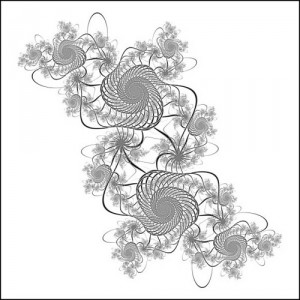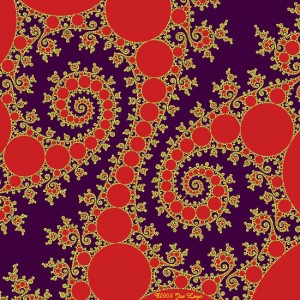 Math is truly a beautiful thing. It’s a simple and elegant truth that isn’t distracted by words or feelings, and at the same time, explains virtually everything we see and hear and feel. In some cases, it’s simplicity is downright brilliant, and in other cases, it’s brilliance is surprisingly simple. That’s not to suggest that math doesn’t have its inherent complexities — as well as some extremely unusual by-products — but deep at the heart of it all, there’s always some important underlying truth.
Math is truly a beautiful thing. It’s a simple and elegant truth that isn’t distracted by words or feelings, and at the same time, explains virtually everything we see and hear and feel. In some cases, it’s simplicity is downright brilliant, and in other cases, it’s brilliance is surprisingly simple. That’s not to suggest that math doesn’t have its inherent complexities — as well as some extremely unusual by-products — but deep at the heart of it all, there’s always some important underlying truth.
In the case of fractal geometry, that truth is inherently beautiful, both in its underlying mathematical functionality, and in its tremendous visual appeal. Every spiraling swirl you see in these stunning Julia Sets is a marvel of algebraic innovation. Loosely defined, the pictures represent “a set of points…for which nearby points do not exhibit similar behaviour under repeated iterations…” And yet, with all this dissimilar behaviour, the images produced seem anything but random at all. In fact, they seem distinctly organized.
As computers grew to prominence through the end of the last millennium, interested observers have finally been able to gawk at the brilliance of their complex algebra, and at the same time, marvel at the natural beauty it creates. So what exactly are these “fractals” anyway?
 In layman’s terms, fractals are mathematical patterns that have a few distinct properties, the most important of which is that each part of the pattern is strikingly similar (but not identical) to the entire geometric shape. Notice in the pictures provided how each of the larger objects seems to give birth to a smaller and slightly altered form of itself. The interesting thing to note here is that as we zoom in on the smallest and most intricate sections of any given fractal, that same basic relationship still holds. In fact, shapes derived from Julia and Mandelbrot sets can be infinitely subdivided and their same underlying pattern will still remain.
In layman’s terms, fractals are mathematical patterns that have a few distinct properties, the most important of which is that each part of the pattern is strikingly similar (but not identical) to the entire geometric shape. Notice in the pictures provided how each of the larger objects seems to give birth to a smaller and slightly altered form of itself. The interesting thing to note here is that as we zoom in on the smallest and most intricate sections of any given fractal, that same basic relationship still holds. In fact, shapes derived from Julia and Mandelbrot sets can be infinitely subdivided and their same underlying pattern will still remain.
But what use could something like this possibly be to someone other than a tenured mathematician or a junkie for space-like art? One need look no further than everyday objects around you to see how fractal patterns govern a lot of the basic geometry of our world.
 Take for instance, this image of a romanesco broccoli. notice that each of the many buds resembles not only the larger vegetable, but also the many smaller bulges along its surface. Many such naturally occurring phenomena seem to exhibit this same geometric sensitivity to fractal mathematics. From seashells to the coast of Norway to microwaved compact discs, nature seems to trend toward the fractal form without the benefit of any math whatsoever.
Take for instance, this image of a romanesco broccoli. notice that each of the many buds resembles not only the larger vegetable, but also the many smaller bulges along its surface. Many such naturally occurring phenomena seem to exhibit this same geometric sensitivity to fractal mathematics. From seashells to the coast of Norway to microwaved compact discs, nature seems to trend toward the fractal form without the benefit of any math whatsoever.
More impressive still is nature’s tendency to trend toward these forms when objects interact with each other, like a nuked CD or the tree-like pattern found in a typical lichtenberg figure, where a naturally-occurring fractal design emerges as the result of a high-voltage dielectric breakdown within a block of simple, non-conductive Plexiglas.
These branching discharges of electrical current appear to terminate in almost hair-like spindles, but this same fractal pattern actually extends right down to the molecular level (i.e. down to the actual molecules that make up the Plexiglas). Similar patterns have been seen on the skin of victims in lightning strikes, as well as in natural fulgurites, where lightning has struck a sandy patch of soil. Which begs the rather obvious question: why is the fractal form so damn popular?
To answer that question, we’d have to dive a few miles deep into some of the most advanced mathematics of our day. Suffice it to say, the science of mother nature’s beauty is a lot more complex than you might think.